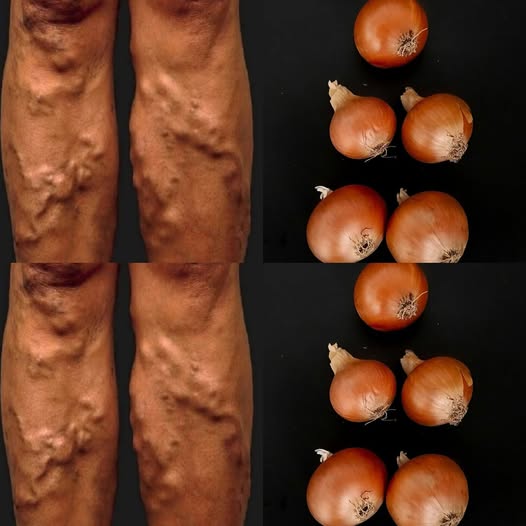Introduction

Have you ever wondered what your poop says about your health? It may sound odd, but your stool can offer valuable insights into your digestive system, nutrition, and overall well-being. From size and shape to frequency and consistency, your poop is a natural indicator of your body’s inner workings. So, why not listen to your body’s subtle signals?
In this blog post, we’re going to break down everything you need to know about the health of your poop. We’ll explore how size, shape, and consistency relate to your health, and what you can do to ensure your digestive system is operating at its best. By the end, you’ll be empowered with actionable tips and a deeper understanding of how your poop can act as a barometer for your well-being.
Let’s dive in!
1. Why Does Poop Matter? Understanding the Basics
Your stool isn’t just something to flush down the toilet. It’s a reflection of your gut’s health and digestion. The color, consistency, and frequency of your poop can tell you a lot about what’s going on inside your digestive system. Healthy pooping habits are often associated with a balanced diet, adequate hydration, and a well-functioning metabolism.
2. What Are the Different Poop Shapes and Sizes?
The Bristol Stool Scale is a widely recognized tool that categorizes stool based on its appearance. It helps to break down the different types of stool so that we can better understand what is considered normal and healthy. Here’s a quick rundown:
- Type 1 (Separate hard lumps): Hard, dry stools that are difficult to pass. This is often a sign of constipation.
- Type 2 (Lumpy, sausage-like): This indicates a mild form of constipation, where stool is formed but not quite smooth.
- Type 3 (Like a sausage but with cracks on the surface): This is considered a normal stool consistency—soft and formed, but not overly hard.
- Type 4 (Like a sausage or snake, smooth and soft): Ideal stool. This indicates a healthy digestive system and is often a sign that you’re hydrated and eating a balanced diet.
- Type 5 (Soft blobs with clear-cut edges): This indicates that the stool is softer and passing more easily, but it may not be as formed as Type 4.
- Type 6 (Fluffy pieces with ragged edges): This suggests mild diarrhea, which can be a sign of digestive upset, possibly from stress or food intolerance.
- Type 7 (Watery, no solid pieces): This indicates diarrhea, which may be caused by infections, food poisoning, or digestive disorders.
Your goal is to aim for Type 3 or Type 4 stool, as these indicate optimal digestion and gut function.
3. What Does the Size of Your Poop Mean?
Size matters when it comes to poop. Larger stools may indicate a higher fiber intake, which is beneficial for digestive health. However, excessively large stools that are difficult to pass could be a sign of constipation or a blockage. Ideally, your poop should be sizable enough to indicate that your body is getting sufficient fiber, but not so large that it causes discomfort.
Here are some key things to consider regarding poop size:
- Normal poop size: Healthy poops should be about the length of a banana, or roughly 4-6 inches long, with a uniform thickness and smooth surface.
- Excessively large poop: This could be a sign that your intestines are working overtime to push out waste. If it’s painful to pass large stools, you may be dehydrated or experiencing constipation.
- Small, pellet-like stool: If your stool is smaller than usual, it might be a sign that you’re not getting enough fiber or that your body is struggling to properly absorb nutrients from food.
4. The Color of Your Poop: What Does It Say?
The color of your stool can reveal important information about your health:
- Brown poop: Healthy and normal. It’s due to the bile produced by your liver, which helps break down fats in food.
- Green poop: Could indicate that food is moving too quickly through your intestines (possibly from diarrhea) or that you’ve recently eaten green leafy vegetables or foods with green dye.
- Yellow poop: This could indicate a malabsorption issue, where your body isn’t absorbing fats properly, often seen in conditions like celiac disease or pancreatitis.
- Black poop: Black stool can be a sign of bleeding in the upper digestive tract, such as the stomach or small intestine. It’s important to consult a doctor if you notice this.
- Red poop: Bright red stool might indicate bleeding in the lower gastrointestinal tract (e.g., hemorrhoids or anal fissures). If you experience this, it’s crucial to seek medical advice.
- White or clay-colored poop: This could be a sign of a problem with your liver or bile ducts and should be checked by a healthcare professional.
5. What Does the Smell of Your Poop Mean?
The smell of your poop is another indicator of your digestive health. Healthy stools tend to have a slightly pungent odor, but overly foul-smelling poop could point to underlying issues:
- Normal odor: A natural, earthy smell, especially if your diet includes a variety of whole foods and fibers.
- Strong, foul odor: This could suggest that you’re eating a lot of processed foods or that your gut is having trouble digesting certain foods. It could also be an indicator of an infection or digestive disorder.
- Unusually sweet-smelling poop: This might indicate an issue like diabetes or a condition called phenylketonuria (PKU), which affects how your body processes protein.
6. How Often Should You Be Pooping?
Pooping frequency can vary from person to person. While the “normal” range can be anywhere from three times a week to three times a day, what matters most is consistency and how you feel. Are you experiencing regular, easy bowel movements, or are you struggling with constipation or diarrhea?
If you’re experiencing less than three bowel movements a week or more than three a day, it may be time to look at your diet and lifestyle. Regular exercise, staying hydrated, and maintaining a healthy balance of fiber in your diet can help regulate bowel movements.
7. Common Poop Problems: What to Watch Out For
- Constipation: If your poop is hard, dry, and difficult to pass, you may be constipated. This can be caused by a low-fiber diet, dehydration, or a lack of physical activity.
- Diarrhea: Watery, frequent stools are often a sign of an infection, food intolerance, or digestive disorders. Chronic diarrhea should be addressed with a healthcare professional.
- Blood in stool: If you notice blood in your stool, it’s essential to seek medical attention immediately. This could be a sign of a more serious condition like hemorrhoids, an anal fissure, or colorectal cancer.
- Excessive gas or bloating: While occasional bloating is normal, persistent discomfort could indicate food sensitivities, gastrointestinal issues, or an imbalance in gut bacteria.
8. What You Can Do to Improve Your Poop Health
- Increase fiber intake: A diet rich in fiber promotes regular, healthy stools. Include plenty of fruits, vegetables, legumes, and whole grains in your meals.
- Stay hydrated: Drinking enough water helps prevent constipation and keeps stool soft.
- Exercise regularly: Physical activity stimulates bowel function and helps with digestion.
- Eat gut-friendly foods: Incorporating probiotics (like yogurt or fermented foods) can support a healthy gut microbiome.
- Limit processed foods: Highly processed foods with little nutritional value can negatively impact your digestive health.
9. When to See a Doctor About Your Poop
While occasional changes in poop are normal, persistent issues may indicate an underlying health problem. Contact a healthcare provider if you experience:
- Unexplained weight loss
- Persistent diarrhea or constipation
- Blood in stool
- Severe abdominal pain or cramping
- Unusual stool color or odor that doesn’t resolve after a few days
Conclusion: Listen to Your Body and Act Now
Your poop can tell you a lot about your health, from the size and shape of your stool to its color and smell. By paying attention to these signs, you can gain valuable insights into your digestive health and take proactive steps to improve it.


